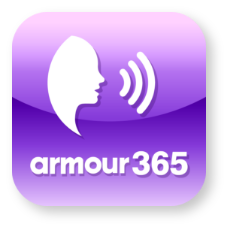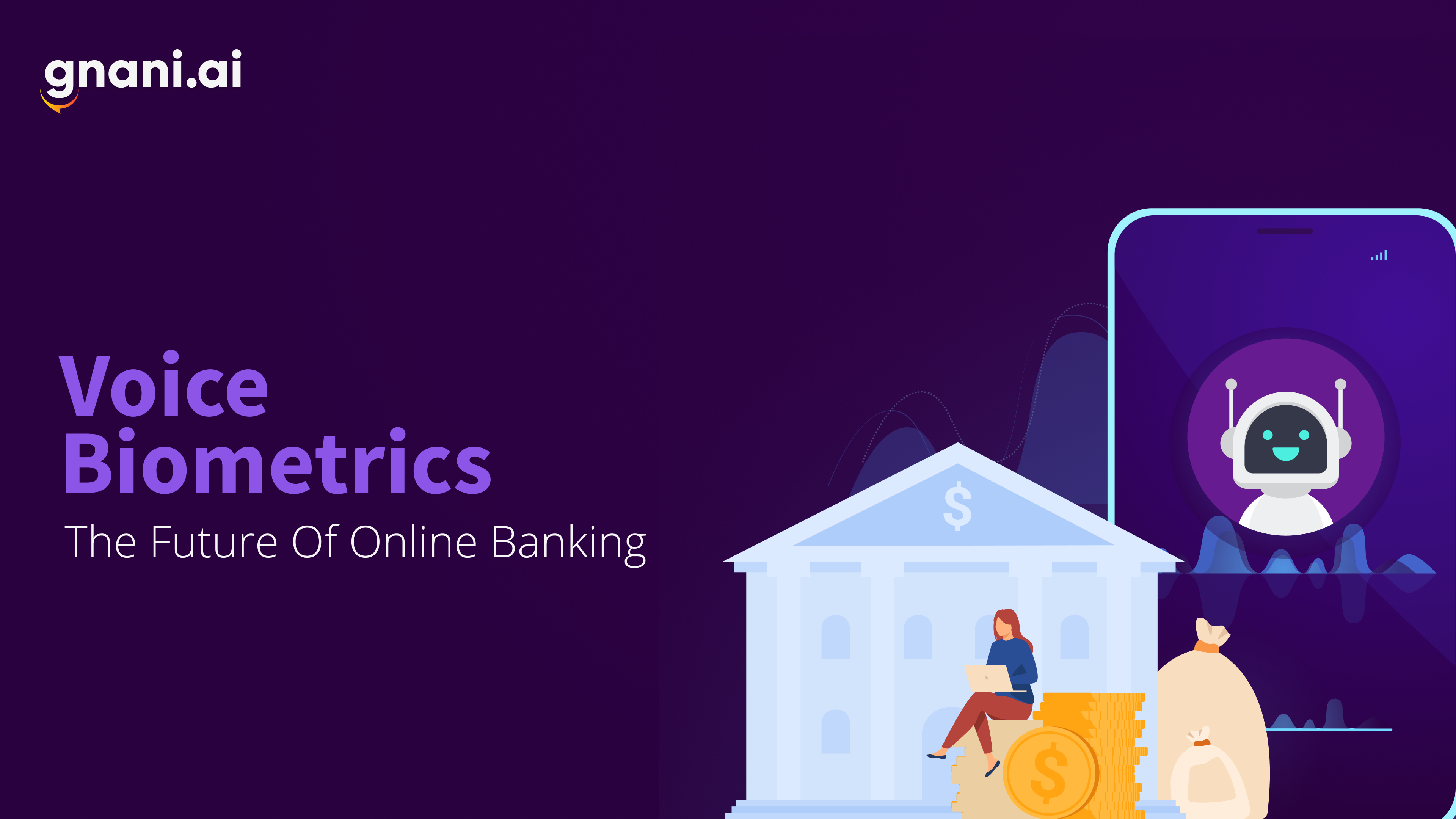Why Voice Biometrics In Banking Is The Future Of Online Banking
Banks have to constantly stay on top of the best methods for authentication to combat online fraud. Traditionally, banks have used knowledge-based authentication methods like PINs, passwords, and one-time passwords. Now, the demand for contactless and seamless technologies has permeated even to banking security, especially after the COVID-19 pandemic’s impact. Voice biometrics in banking is a promising online banking solution, above and beyond the retina and fingerprint scanners that require people’s physical presence.
In this post, we trace why traditional authentication methods are falling short in the post-COVID world, and the various avenues opened up in online banking by the adoption of voice biometrics solutions. From fraud prevention to improved customer experience, the benefits are manifold.
Why Move Towards Voice Biometrics For Online Banking?
Knowledge-based authentication has proven effective when done right. Multi-factor authentication, where users input a pre-set password, an OTP sent to their devices, etc., helps prevent the majority of attacks using stolen credentials. As any single factor is useless without the other, fraudsters cannot easily hack the transactions.
;
However, knowledge-based authentication depends hugely on user vigilance. It requires users to put in the effort to choose strong login credentials, preferably different for each account, and update them regularly. It makes many people feel frustrated with online banking, especially when they have to often come up with passwords that meet the security criteria.
Second, fraudsters have evolved to find ways to scam people. Despite numerous warnings from bankers, people do end up falling prey to phishing scams. An interesting stat states that in 2019, there were 6,233 Indian cases registered under fraud and cheating using communication devices, while the US had over 1473 cyber attacks.
There have been more ingenious techniques involving the use of technology and hacking as well. MasterCard reported that it gets nearly 500,000 intrusion attempts every day. Therefore, knowledge-based authentication is not as tamper-proof as desired.
That brings us to biometric authentication- it is unlikely that fraudsters will find it feasible to steal people’s biometric details on any large scale, even if they do manage a data breach. Particularly, when combined with multifactorial knowledge-based authentication, it provides near-impenetrable security.
How Voice Biometrics in Banking Works
Voice biometric recognition works by inputting the voice of the individual whose identity has to be stored in the system. This input is kept as a print for authentication. The input print is made with software that can split the voice statement into multiple frequencies.
Behavioral attributes are identified at this stage that work mutually to make up the voice print. Voice recognition is much like iris or fingerprint recognition. Each one is unique to an individual and cannot be duplicated. These prints are stored in the database for further authentication.
Meanwhile, a text independent system focuses and matches unfamiliar speech with previously stored voice information.
Types of voice authentication:
- Text-Independent recognition – The system does not keep any pre-recorded audio to compare with the input in this case. It’s a voice authentication approach that doesn’t require any prior speech material to be entered into the biometric system. It is far more practical because it allows for free speech.
- Text-dependent recognition – This necessitates the repetition of a previously delivered sentence that has been stored in the system, posing a speech content limitation.
What About Other Types Of Biometric Authentication?
The principal kinds of biometric authentication that are relevant to large-scale online banking are physiological like fingerprints, iris patterns, facial recognition, etc., or behavioral like web behavior, IP addresses, voice recognition, etc. They all have the common advantage of convenient user experience as compared to knowledge authentication.
Physiological biometrics have a few drawbacks that became obvious during the COVID-19 pandemic, principally their contact-driven nature, requiring physical presence. While they are the best way to confirm proof of life, it becomes a hassle for consumers like senior citizens and convalescents. Fingerprints may also not be recognized if the person has cuts or scrapes or disorders like psoriasis, contact dermatitis, etc.
Voice biometric authentication in banking relies on voice patterns, with each person having unique phonetic and morphological traits that AI can discern. As voice biometrics is contactless, the methods are more convenient to use and speed up the processes.
Adding Voice Biometrics to Improve Online Banking
Banks are already rolling out voice AI support due to the spread of AI assistants in people’s homes and phones. Customers are increasingly preferring to ask aloud for services from balance inquiry to blocking credit cards. They prefer not to have to remember dates and passwords. Voice prints can be added as another layer of security.
The biggest advantage is remote identification. Physiological biometrics requires scanners at the customer-end, while voice biometrics needs nothing besides existing phone lines and mobile infrastructure. The software exists at the bank’s side. The user can be asked to say a phrase that may be randomly generated to create a sample to authenticate. If a match is not found, access will be denied. This method works against hackers who try to use voice recordings.

;
There are nearly 6500 languages spoken all over the world. Voice biometrics in banking is key to extending comfortable banking services everywhere. armour365™ is an AI-based voice biometric solution that has the advantage of being language and text independent while also being incredibly fast. armour365™ has an anti-spoofing layer to prevent hacking by using recorded voice or voice models. There are two modes of voice biometrics to enhance security:
- Passive or Using Free Speech – This method doesn’t need the user to say anything specific and happens seamlessly in the background.
- Active or Using Passphrase – This method requires the user to speak a predetermined passphrase, fixed or dynamic.
Difference between Active Voice Biometrics and Passive Voice Biometrics:
| Active Voice Biometrics | Passive Voice Biometrics | |
| Enrollment | Requires repetition of the same phrase a few times | Can happen during a regular conversation |
| Authentication | A user must say a certain passphrase each time they want to be authenticated | Authentication happens when a user speaks as usual or has a conversation with an agent |
| Security | A user is only verified at the beginning of a conversation using a passphrase that can be stolen | Continuous authentication – the verification process can run in the background throughout a whole conversation |
| Customer Experience | A longer authentication process that requires a user to say a passphrase | Happens instantly during a conversation with an agent |
;
Biometrics In Banking – Use Cases
Let’s take a look at some areas where voice biometrics can enhance operational efficiency and save costs.
Public Services
Banks offer social security products like insurance and pension that require proof-of-life authentication when the payments are disbursed. Rather than asking people to come in, their voices can be used. The biometric technology can identify over 140 features of human voices to make identification reliable and tamper-proof.
Contact Centers
Hundreds of calls are received in the call center every day, and the agents have to spend nearly 5 minutes to authenticate the user, which is frustrating for the customers. Conversational AI is already transforming the call centers by providing a seamless customer experience, Voice biometrics can further simplify the interactions. It can validate the customer’s identity when dealing with sensitive cases. The call waiting time reduces, making everything more efficient.
Automating Simple Queries
Accessibility of banking is a major concern worldwide. Developing countries have large sections of the population that cannot physically visit branches, even for simple things like checking their balance, while many are not savvy enough to use apps to do so. Those with disabilities of sight are also disadvantaged in this regard. Voice biometrics makes it convenient to carry out their day-to-day tasks securely by automating the entire process.
Enhances KYC Processes
Multilingual countries like South Asia have people of varying education levels across far-flung areas. Voice biometrics can help include such people into a financial security net as the solutions are language-independent.
Advantages of Voice Biometrics in Online Banking
Low Operational Costs
Banks can save money by using voice authentication. It saves them millions of dollars by eliminating many of the steps necessary in traditional verification methods. It can recognise the customer’s voice during an end-to-end chat to authenticate their identity without the need for customary inquiries.
Enhanced User Experience
Another advantage of voice biometric systems that is often neglected is that they have the ability to greatly improve customer experiences. Callers no longer need to offer passcodes, PINs, or answer challenge questions to verify their identity.
This makes speech biometrics perfect for omnichannel and multichannel deployments, as a customer’s voiceprint can be used across all of your company’s support channels once they’ve been enrolled.
Increased Accuracy
Voice authentication is more accurate and trustworthy than passwords, which are easy to forget, modify, or guess. It’s similar to fingerprints, which no one else can have. In other words, unlike passwords, you cannot forget or reproduce a voice. Despite the fact that the sound may be impacted by a variety of things, it is far more reliable and convenient.
Easy to Implement Technology
Many businesses including banks value the simplicity of voice recognition biometrics in terms of use and implementation. Some biometric technology can be challenging to integrate into a business like a bank and to get started with. However, voice biometric systems can usually be implemented without additional equipment or systems because they require so little.
Since this technology is so simple to use, banks can often reassign personnel elsewhere in the organization to boost performance and customer satisfaction.
Conclusion
Early adoption of next-gen technology like voice biometrics can help accelerate the modernization of the banking industry, keeping it poised to hold the attention of the millennial and gen Z customers who are its future. Secondly, cyberattacks cost each banking company an average of $18.3 million annually.
armour365™ is a flexible and easy to deploy voice biometric. It can be integrated into the existing IVR, telephony, and other mediums without any need for special equipment. Therefore the initial investment is less, and you can also deliver a smooth and secured customer experience.
Frequently Asked Questions
What is voice biometric in banking?
Voice biometrics is a technological solution that allows the authentication of an individual through the recognition of voice characteristics and speech patterns. This is possible because the phonetic and morphological features of each person’s vocal apparatus are unique
Do banks use voice recognition?
Today, several banks and financial service companies offer voice recognition for retail banking operations through existing voice assistants commonly found in the home and on smart devices. So far, many consumers embrace voice recognition in banking.
How accurate is voice biometrics?
System accuracy could be anywhere between 90 and 99%, a broad range. Voice biometric accuracy is also in this range for a variety of reasons. However, even with its imperfections, voice biometrics is an extremely valuable tool.
;






Top Five Factual Conversational AI In Insurance And Banking Use Cases
[…] Fortunately, AI engines can prove to be an invaluable asset in identifying variations from regular consumer behavior and patterns that point towards fraud so that security watchdogs can initiate real-time action against it to mitigate its impact. These conversational AI modules can be integrated with voice biometrics to seek authorization for actions. Take a look at our voice biometrics in banking article to have a clear idea of how voice biometrics improve online banking security. […]